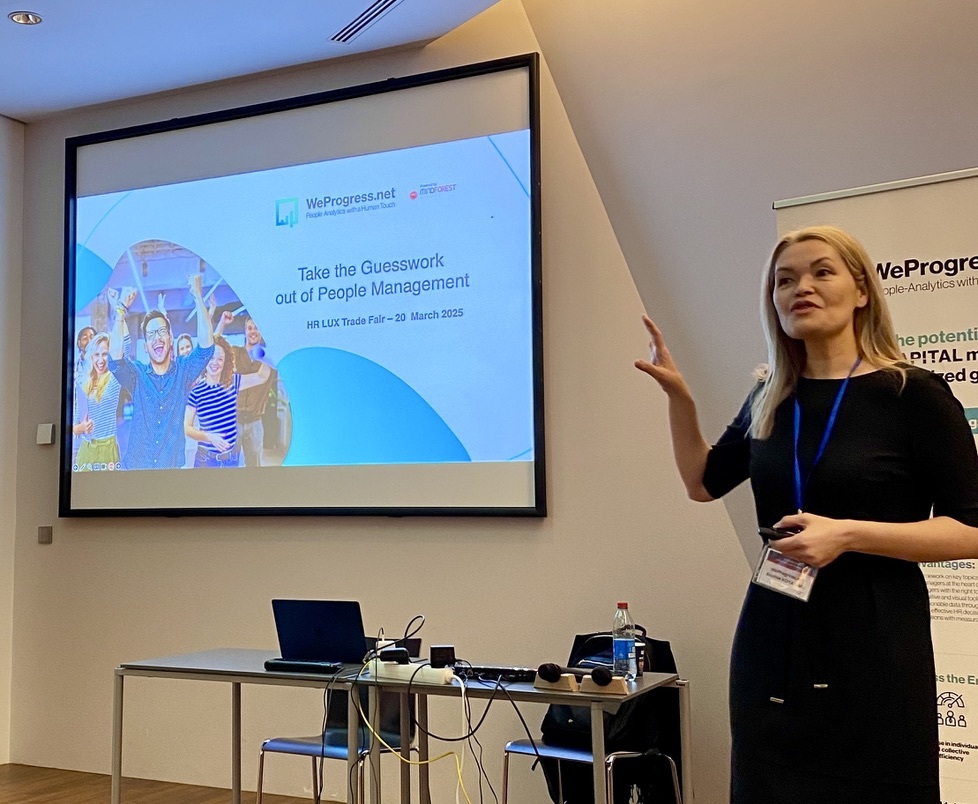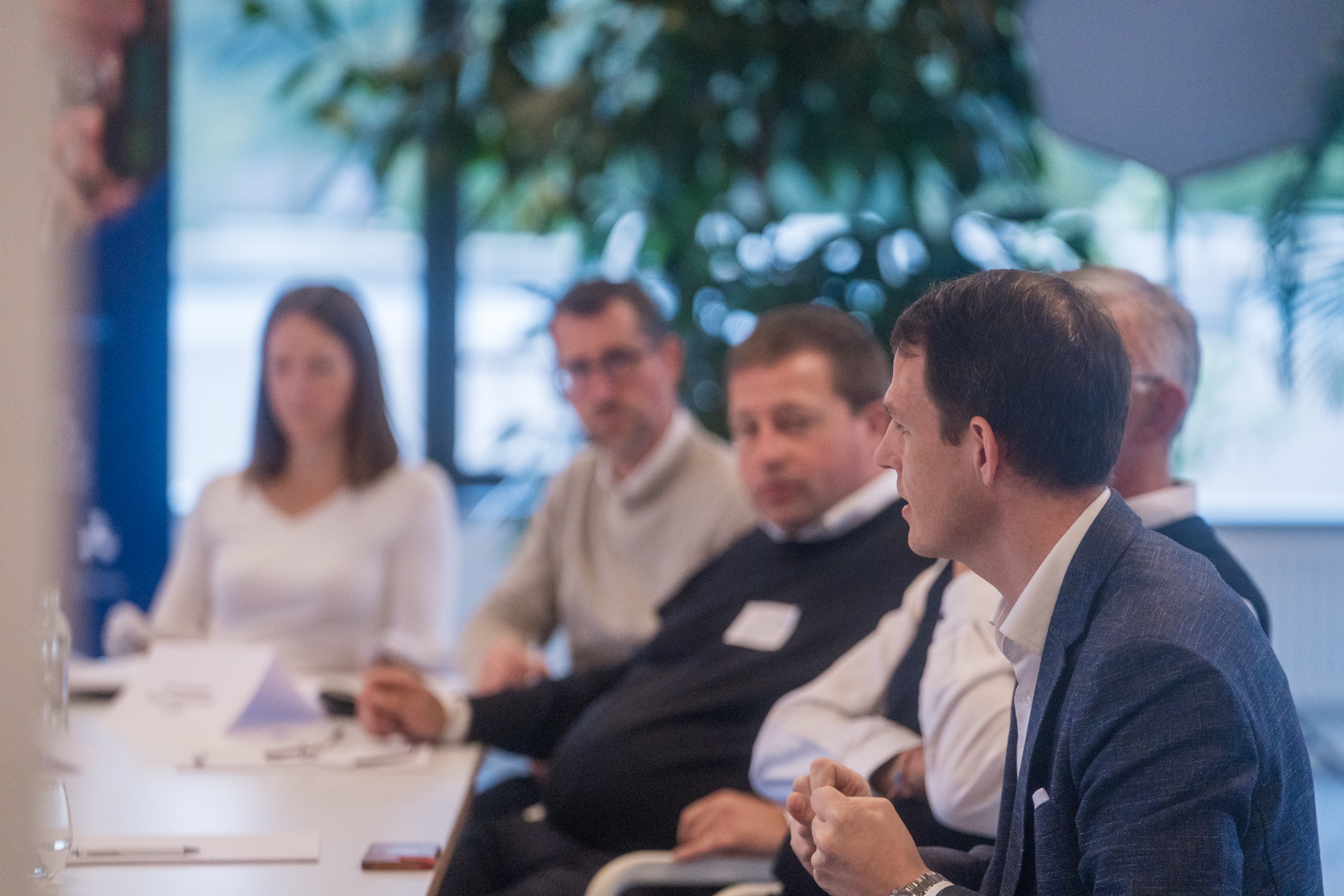How can Strategic Foresight Contribute to Collective Efficiency in your Organisation?
How fear of the future impacts corporate performance
Gradually over the last few decades, and even more so since the Covid-19 pandemic, our sense of perception has changed: the world seems more unpredictable. Climate change, supply chain issues, rapid workplace digitalisation: uncertainty is everywhere[1]. The multiplication of these changes and their innumerable impacts provoke a collective feeling of helplessness, confusion and ultimately anxiety about the future.
This is because our brains are wired to try to predict the future[2]. Indeed, as humans we have this unique ability to imagine ourselves in alternative futures and to evaluate them as a means of making decisions and guiding present actions. Psychologists such as Martin Seligman, Roy F. Baumeister and others[3] call this ‘foresight’, our collective ability to think about the future and envision what is possible. We often draw on our memories to help us project ourselves into the future[4] sometimes far into the future. However, in a context of constant change and after experiencing major disruptions, we may lose confidence in our ability to effectively anticipate the future. And this loss of confidence can lead to feelings of powerlessness and insecurity.
That’s no easy job to be a leader today
Lyselotte Lingso, Founder of Future Navigator
And at wider organisational level, this feeling can lead to paralysis in decision-making and short-term thinking, which, in combination with organisational under-performance, can be fatal[5] if the organisation does not adapt quickly enough to changes in its market and customers’ needs.
In this context, and as is often the case when faced with the complexity of our environment, collective intelligence and collaboration provide potential solutions.
Indeed, in order to overcome our individual limitations, we need to exercise our foresight capacities jointly. Our organisations need to collectively detect, monitor and continuously interpret changes in their internal and external environment – an environment that extends beyond the traditional domains of organisational analysis to include value systems, social, regulatory and political contexts, as well as technology.
This is what Strategic Foresight entails: to enable an organisation to collectively observe and analyse its environment and to work together to imagine alternative futures and inspire our strategic decision-making today.
Strategic Foresight offers a robust methodology for conducting foresight exercises individually and in groups within organisations. Its use offers tangible results such as strategy optimisation (Organisations are faced with complex decisions and increasing change), but the collective practice of Strategic Foresight has other benefits for an organisation with regard to its collective efficiency. It encourages a change of mindset and the development of skills by the people who practice it. More broadly it encourages an evolution of the organisational culture where it is applied, thus leading towards greater adaptability and innovation.
Exploring the future together leads to enhanced collective efficiency in our organisations
Thinking about the future is not only of strategic importance. It helps us to achieve our goals and take advantage of new opportunities. This is especially true when organisations are able to combine their forecasting activities, the exploratory activities of foresight and strategic foresight, with planning activities.
“Planning organises activity according to a plan“, which is essential for the realisation of complex activities and their success, “(…) whereas foresight is defined as the science of studying the technical, scientific and economic causes that accelerate the evolution of the world.”[6]
The latter is indispensable for detecting new opportunities and directing one’s innovational capacities in the right direction.
In other words, planning makes the optimal exploitation of existing solutions possible or the effective implementation of new solutions, an activity based in particular on the analysis of data from the past resulting in forecasts which consist of the linear projection of this data into the future. While foresight allows the exploration of innovative solutions and new opportunities, looking not at the past and present but at the future. Consequently, the combination of these methods allows an organisation to develop a 360° vision, to guide strategic decision making and its effective implementation.
To reach this level, organisations need to dispose of an organisational architecture that effectively allows for the pooling of these various capacities: the sharing of information and knowledge, the coordination of the implementation of these tools, and collaboration, particularly in the form of networking. The creation of a community of practice, in an agile mode of operation (Agile change management), can support this dialogue and encourage adaptive planning, i.e. by taking into account the progressively enabled incremental innovation achieved by using foresight exercises.
In addition to the 360° vision, as a guide to the strategic decision making by members of the organisation’s top management, the practice of Strategic Foresight enables the development of a systemic and holistic view of one’s organisation and its ecosystem. This new focus allows managers to see the organisation differently – not as a machine with a top-down hierarchy and a rigid bureaucracy, but as a living, evolving and adapting system, helping to bring about a new form of more agile and adaptive management[7].
Foresight also constitutes a proactive coping mechanism that has been proven to reduce stress and help us feel more in control. A study[8] shows that leaders who practice Foresight and have developed their skills in this field are up to 34% less anxious and 35% less depressed, furthermore they are also more confident about the future, more productive and so are their teams. The latter are reported to be:
- 18% more efficient,
- 25% more agile,
- 19% more committed, they innovate 18% more, and dare to take 13% more risks.
And this is all the more true when these teams combine the practice of foresight with a positive state of mind using tools such as Appreciative Inquiry.
The use of foresight and Strategic Foresight aims at challenging our action patterns and our representations of the world. By integrating an exploratory approach into our day-to-day activities, we develop our discovery skills, which constitute the basis for innovation. Thus, by regularly scanning our environment to spot the weak signals that herald change and major transformative trends, we push ourselves to develop our skills of observation and questioning, networking and association. The same is true of creating scenarios, which develops our creativity and our ability to experiment. All these abilities are essential for identifying possible changes and opportunities and creating solutions for the future: the future that benefits our organisations.
The future belongs to the curious – those who see beyond existing systems and thinking patterns
Max Everest-Phillips Director, UNDP Global Centre for Public Service Excellence
In the end, the biggest thing you can try to shape is the culture of the organization
Tony Guzzi, PDG, EMCOR
And precisely because Strategic Foresight allows the development of new practices and a new state of mind, the whole culture of the organisation benefits from its practice to become more adaptable and agile, as well as more proactive in the face of inevitable changes. Furthermore, the collective exercise of foresight and Strategic Foresight has the effect of creating a common perception of risks, future operational needs, and the human and technological capacities that will enable them to be met. It also allows us to collectively reflect on deeply transformative subjects in the light of the organisation’s shared values. Indeed, imagining the future challenges and questions our individual and organisational taboos. Reflecting together on the alternative futures of our organisation means putting its raison d’être and identity into perspective in these potential different versions of its future.
Just one simple exercise can boost an individual's future-minded leadership skills
Adam Wood, BetterUp [11]
If you would like to know more about the potential positive impact of Strategic Foresight and its collective practice, for example greater collective efficiency in YOUR organisation, more innovation, better decision making and improved leadership, the creation of a culture of change resulting in teams united around engagement and empowered thinking, then please get in touch!
Let us help you
[1] An attempt has been made to encapsulate this complexity and interconnectedness in the acronym ‘VUCA’ (Volatile, Uncertain, Complex and Ambiguous) to describe our world today. Explanations of the origin of the acronym abound on the Internet, including this one: ”VUCA is an acronym (artificial word), first used in 1987 and based on the leadership theories of Warren Bennis and Burt Nanus, and stands for Volatility, Uncertainty, Complexity and Ambiguity. It was the response of the US Army War College to the collapse of the USSR in the early 1990s. Suddenly, there was no longer the only enemy, resulting in new ways of seeing and reacting.” Found on the website: https://www.vuca-world.org
[2] See for example the white book by John Templeton Foundation by the Greater Good Science Center à UC Berkeley, written by Summer Allen, Ph.D. & accessible via the link: https://ggsc.berkeley.edu/images/uploads/White_Paper_Future-Mindedness_LR_FINAL.pdf ”Considering the best route home, deciding whether to take the stairs or the elevator, fantasizing about what you will do when you retire. What do they have in common? They all involve thinking about your possible future. What will happen if you go there or do that—and what will it mean for future you? This remarkable ability to consider our future— indeed, our many possible futures—is called “prospection” or “future-mindedness.” It’s a special skill that humans have developed to a unique extent; some even argue that it provides a framework for understanding topics ranging from perception, cognition, and memory to consciousness and free will.”
[3] The authors have produced an extensive literature. See in particular: Homo Prospectus, Oxford University Press Inc, 2016.
[4] See the advances in neuroscience on the memory of the future, for example: Francis Eustache, La mémoire au futur, Ed. Le Pommier, 2018.
[5] There are many examples of organisations that have failed to detect a transformative change in their market, such as Kodak, Xerox or BlackBerry.
[6] MERINDOL Valérie, « La planification et la prospective au sein des organisations », Revue française de gestion, 2008/1 (n° 181), p. 63-76. DOI : 10.3166/rfg.181.63-76. URL : https://www.cairn.info/revue-francaise-de-gestion-2008-1-page-63.htm
[7] ”Working in a team tends to foster higher levels of future-minded leadership than working alone, as does having a large scope of responsibility. Having multiple levels of dependencies on others may help us build our muscle in thinking through the consequences of decisions and actions and what is within our sphere of control and not. Working with others exposes us to new ideas and new ways of thinking about the future.” Adam Wood, Meet the Future-Minded Leader: Your organization’s answer to uncertainty, article accessible via the link: https://www.betterup.com/blog/insights-report-future-minded-leader
[8] ”BetterUp has studied the habits and actions that individuals can practice to become future-minded themselves, and successfully navigate the uncertainty that is our reality these days. Its research of more than 1,500 U.S. workers found a correlation between the ability to leverage the skills associated with future-minded leadership and mental health.” ibid.
[9] For Clayton CHRISTENSEN there are 5: questioning, association, observation, networking and experimentation. See ”The innovator’s gene – 5 comptences which make the difference” by Clayton CHRISTENSEN – Ed. Pearson 2013
[10] Original quote: “In the end, the biggest thing you can try to shape is the culture in the organization.” – Tony Guzzi, CEO, EMCORhttps://chiefexecutive.net/the-ceos-role-in-shaping-an-organizations-culture/
WANT TO RECEIVE OUR LATEST THOUGHT LEADERSHIP CONTENT?
Related posts
 Take the Guesswork out of People Management
Take the Guesswork out of People Management
 From processes to people: achieving quality
From processes to people: achieving quality
 Daring to lead Positive Transformation: What if Positive Emotional Capital was your key to sustainable change?
Daring to lead Positive Transformation: What if Positive Emotional Capital was your key to sustainable change?
 Why hire Change management professionals? We can do it alone!
Why hire Change management professionals? We can do it alone!
 Digital Transformation and Change Management: Lessons shared in an event hosted by Cebi and MindForest
Digital Transformation and Change Management: Lessons shared in an event hosted by Cebi and MindForest



